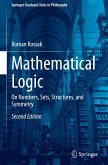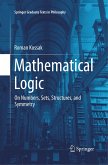This book uses Ludwig Wittgenstein's philosophical methodology to solve a problem that has perplexed thinkers for thousands of years: 'how come (abstract) mathematics applies so wonderfully well to the (concrete, physical) world?' The book is distinctive in several ways. First, it gives the reader a route into understanding important features of Wittgenstein's writings and lectures by using his methodology to tackle this long-standing and seemingly intractable philosophical problem. More than this, though, it offers an outline of important (sometimes little-known) aspects of the development of mathematical thought through the ages, and an engagement of Wittgenstein's philosophy with this and with contemporary philosophy of mathematics on its own terms. A clear overview of all this in the context of Wittgenstein's philosophy of mathematics is interesting in its own right; it is also just what is needed to solve the problem of mathematics and world.
"It is written using concise and clear language, with interesting mathematical examples and with an effort to make the polemics that are engaged in the book as clear as possible. There is a clear route leading one from the formulation of the problem to the final solution, and the reader is led from chapter to chapter to form an overview of the problem and the ingredients for its solution" (Jonas Rafael Becker Arenhart, Mathematical reviews, September, 2018)







